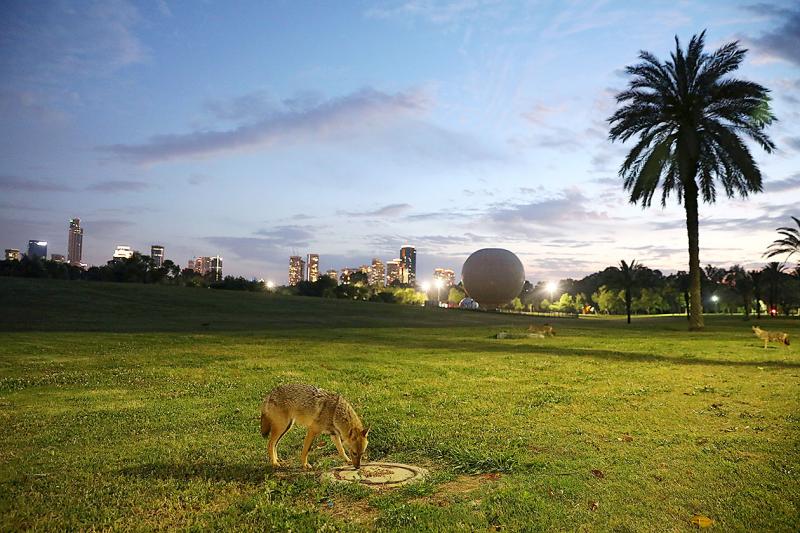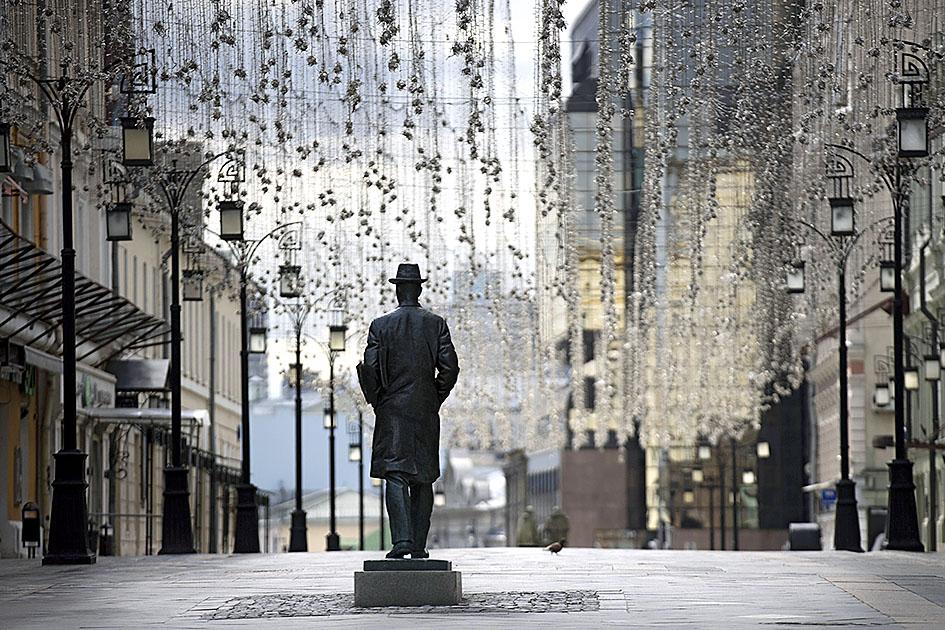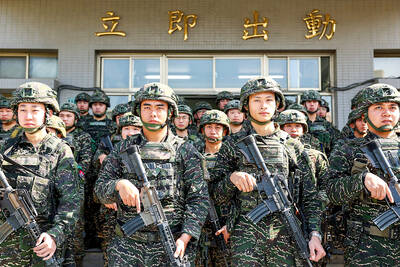Working from home and other measures to help stem the spread of the coronavirus outbreak in Britain show how quickly the country could change its ways to address climate change too, participants in the Climate Assembly UK said on Sunday.
“With coronavirus, [the government] has had to act because they had no choice in the matter. With climate change, they need to act in the same way,” said Marc Robson, 46, a British Gas installer and one of the 110 members of the citizens’ assembly.
As with the response to the COVID-19 respiratory disease, “people will die if we don’t do it,” the Newcastle resident warned in a video interview.

Photo: EPA-EFE
“And we all need to buy into this as well. It needs to be explained to the public that if we don’t change what we’re doing, it’s going to cost us, big time.”
The assembly, chosen to reflect Britain’s diverse geographic and demographic makeup, as well as different viewpoints on climate change, has met once a month in Birmingham since January to hear from experts on climate science and policy.
It is expected to submit over the summer its recommendations to the government on how Britain should meet a legally binding goal to cut its climate-heating emissions to net zero by 2050.

Photo: AP
But with coronavirus restrictions now in place on public gatherings, the assembly this weekend was held for the first time online — a change some assembly members saw as a “test run” for potential climate-smart shifts they had been discussing.
“This has opened up my mind that we can make these changes, like working at home,” Robson said.
Sarah Allan, the head of engagement at Involve UK, a charity helping run the assembly, said some members of the group had asked to discuss coronavirus during this weekend’s event and reflect on “how it makes them feel about what they’ve heard.”
Ibrahim Wali, 42, a physician based in Surrey, said he had been conducting COVID-19 assessments via telephone and video-link since the outbreak began and realized “it’s doable.”
“People could stay home more, work remotely. Sometimes in life you just need a challenge to change the way you live and operate,” he said.
What he had learned more generally at the assembly sessions also had led him to install LED lightbulbs at home, look at switching to a hybrid or electric car and reconsider how often he eats meat, which has a large carbon footprint.
“If you can do that on an individual level, that’s where it starts. Then it’s friends, family, society,” he said in a video interview.
Reducing emissions “is not just something for the government to do. I thought in the past the government would sort it all out with laws and legislation. But it makes a huge difference if everyone looks at themselves and makes a change,” he added.
KNOWLEDGE FOR ALL
Ellie, a 21-year-old assembly member and new university graduate from North London, who did not want her surname to be used, said she had started taking part in the gatherings confident “technology will solve all the problems.”
“I’ve been made aware of how actually it’s acceptance there’s going to be a change in our lifestyles and we will have to compromise,” she said. “We can’t rely on tech and someone else doing it for us. It has to be all of us working together.”
The assembly’s meetings had given her a much better understanding not just of the range of options available to deal with global warming, she said, but how they might affect people living very different lives from hers, including in rural areas.
“If we’re going to make genuine progress, there needs to be a real awareness of what the options are, the impact they will have on different groups and what’s actually financially viable,” she said.
The assembly participants said they wished everyone in Britain could have access to the information they had received from experts speaking at the gatherings.
Organizers noted the sessions had been recorded and are available for public access online: www.climateassembly.uk/about/speakers/
“There’s a real kind of segregation — between people who know a lot about climate change and people who don’t — and that’s creating problems and tensions,” Ellie said.
“If we can educate everyone to the same level, we can create a real consensus for progress,” she added.

That US assistance was a model for Taiwan’s spectacular development success was early recognized by policymakers and analysts. In a report to the US Congress for the fiscal year 1962, former President John F. Kennedy noted Taiwan’s “rapid economic growth,” was “producing a substantial net gain in living.” Kennedy had a stake in Taiwan’s achievements and the US’ official development assistance (ODA) in general: In September 1961, his entreaty to make the 1960s a “decade of development,” and an accompanying proposal for dedicated legislation to this end, had been formalized by congressional passage of the Foreign Assistance Act. Two

President William Lai’s (賴清德) March 13 national security speech marked a turning point. He signaled that the government was finally getting serious about a whole-of-society approach to defending the nation. The presidential office summarized his speech succinctly: “President Lai introduced 17 major strategies to respond to five major national security and united front threats Taiwan now faces: China’s threat to national sovereignty, its threats from infiltration and espionage activities targeting Taiwan’s military, its threats aimed at obscuring the national identity of the people of Taiwan, its threats from united front infiltration into Taiwanese society through cross-strait exchanges, and its threats from

Despite the intense sunshine, we were hardly breaking a sweat as we cruised along the flat, dedicated bike lane, well protected from the heat by a canopy of trees. The electric assist on the bikes likely made a difference, too. Far removed from the bustle and noise of the Taichung traffic, we admired the serene rural scenery, making our way over rivers, alongside rice paddies and through pear orchards. Our route for the day covered two bike paths that connect in Fengyuan District (豐原) and are best done together. The Hou-Feng Bike Path (后豐鐵馬道) runs southward from Houli District (后里) while the

March 31 to April 6 On May 13, 1950, National Taiwan University Hospital otolaryngologist Su You-peng (蘇友鵬) was summoned to the director’s office. He thought someone had complained about him practicing the violin at night, but when he entered the room, he knew something was terribly wrong. He saw several burly men who appeared to be government secret agents, and three other resident doctors: internist Hsu Chiang (許強), dermatologist Hu Pao-chen (胡寶珍) and ophthalmologist Hu Hsin-lin (胡鑫麟). They were handcuffed, herded onto two jeeps and taken to the Secrecy Bureau (保密局) for questioning. Su was still in his doctor’s robes at